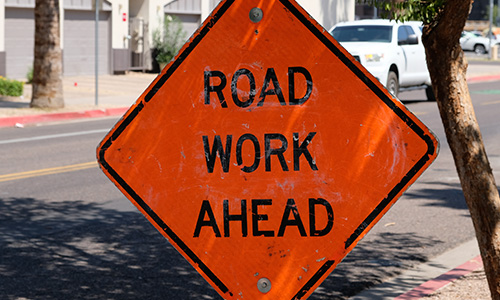The status of infrastructure within the United States of America is always a significant topic in American politics. Most people use cars or public transportation to get to work or other destinations. However, it’s been years since any major infrastructure legislation has been passed. This has resulted in aging, deteriorating and crumbling infrastructure systems; potholes in roads, rusting bridges, and outdated rail lines dot the 50 states.
The American Society of Civil Engineers (ASCE) gave the U.S. an overall grade of C-minus for its infrastructure for 2021. NPR reported that bridges are structurally deficient and that the nation’s infrastructure costs an American around $3,300 in “hidden costs” (i.e., increased fuel consumption from waiting in traffic, extra car repairs due to poor road conditions).
Most infrastructure spending comes from local and state government budgets. Most states tax motor fuel and vehicles as well as collecting fees from toll roads. However, only four states raise enough revenue to meet their highway spending: California, Indiana, Montana and Tennessee. More than 90% of states have to redirect funds from other sectors to cover highway costs.
Nevertheless, states continue to conduct infrastructure projects. In Arizona, the state is replacing old bridges and expanding its light rail service. In California, the California Transportation Commission allocated $924 million toward infrastructure projects such as widening intersections and electrification of certain bus routes. President Joseph R. Biden Jr. wants to do more as well.
Biden introduced the American Jobs Plan on March 31. The administration wants to repair, rebuild and upgrade the country’s dilapidated infrastructure, some of it being built in the 1950s during the presidency of Dwight D. Eisenhower. The price tag, if the plan passed both the House of Representatives and the Senate, would cost around $2.65 trillion.
Biden plans to pay for his plan through his Made in America Tax Plan. The president wants to have U.S. corporations pay for the bill with this proposal. Some of the proposals put forward by the administration are raising the corporate income tax rate from 21% to 28% and preventing U.S. corporations from inverting or claiming tax havens as their residence. He also wants to ramp up corporate tax enforcement.
Americans need to be informed on what is happening locally and nationally on infrastructure, specifically the business side of the issue. How much will specific projects cost? How will increased spending benefit the average person in the future? What are the short-term benefits? What are the long-term benefits? Are there any consequences to spending this much money? The business of infrastructure is complex, but it can be simplified. Here’s how you can approach this in your business reporting.
First, find the original source. Go and find what the agenda really is. You can’t rely solely on what has been said by others. They probably heard from somebody else and believe that is the truth. That is never enough. Go to the White House website. There, fact sheets and press releases about the administration’s agenda are published often. See what it has to say and then move forward. Simple business facts can be misconstrued by mistake because of word-of-mouth communication. Always double check sources and compare what each has to say about the same topic.
Another tip when reporting about the business side of infrastructure is the cost. Everyone is heavily invested in the expense of infrastructure. As a business reporter, you can’t tell how much it will actually cost. You can only give estimates since nothing is set in stone, but independent organizations, like the Committee for a Responsible Federal Budget, can give insight.
Similarly, when reporting on the cost of infrastructure projects, don’t just report on the estimated total cost. A breakdown of the expenses must be put out there for people to understand what amount of money is being allocated to a specific project. Visual aides, such as pie charts or tables, that break down each category can help break down the complex monetary topic into more understandable chunks.
Finally, add context to the story. The state of U.S. infrastructure is constantly changing. Background needs to be included because it can explain why certain actions occur. Independent think tanks, such as the Council on Foreign Relations and the Tax Foundation, provide invaluable infrastructure context for you to use. This background can strengthen business reporting and provide even further explanations to readers who want further information on the topic’s importance.
For a quick look at the estimates and costs of Biden’s infrastructure plan, browse the infographic below. There you will find sources for his proposals underlined.









